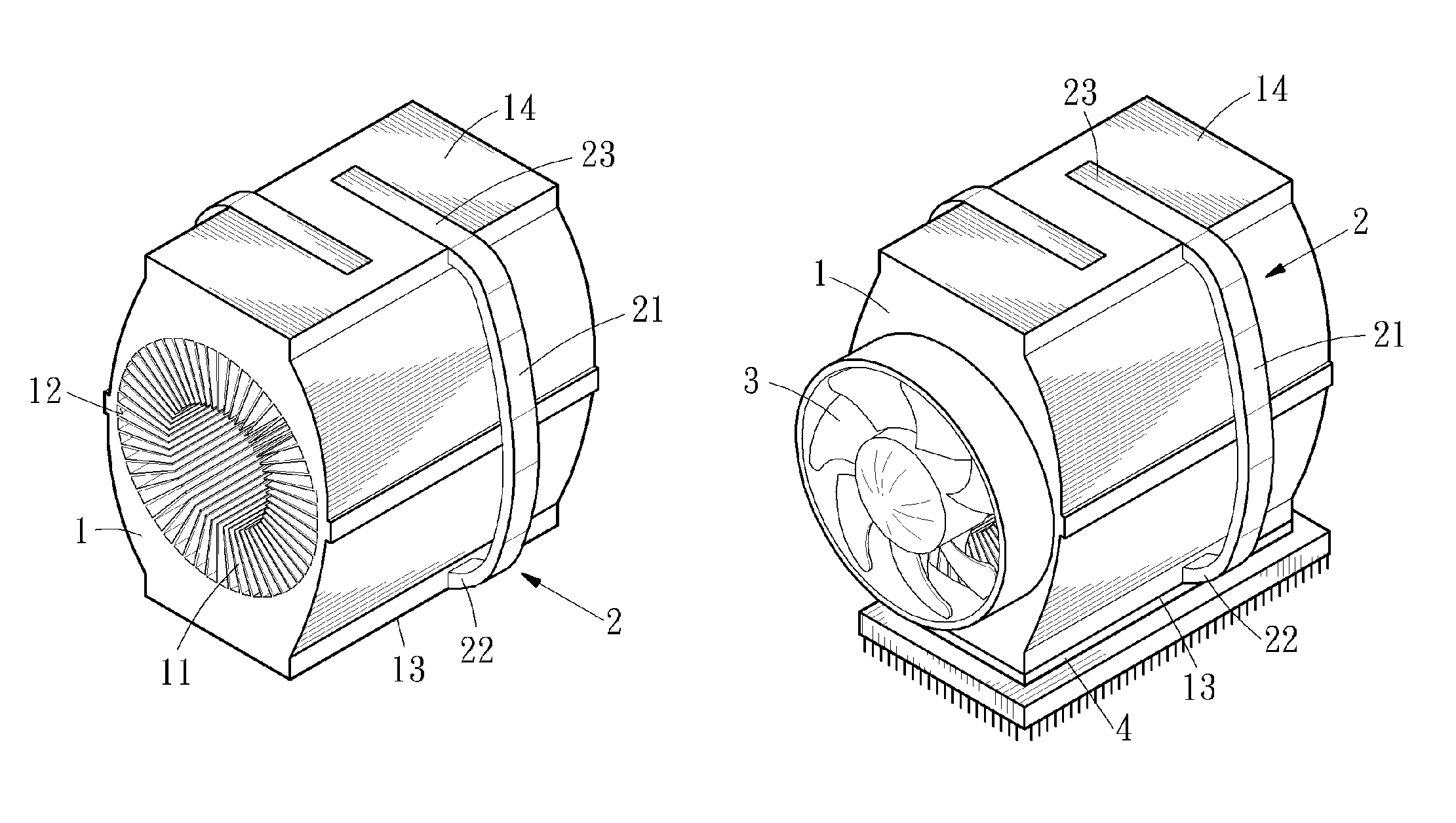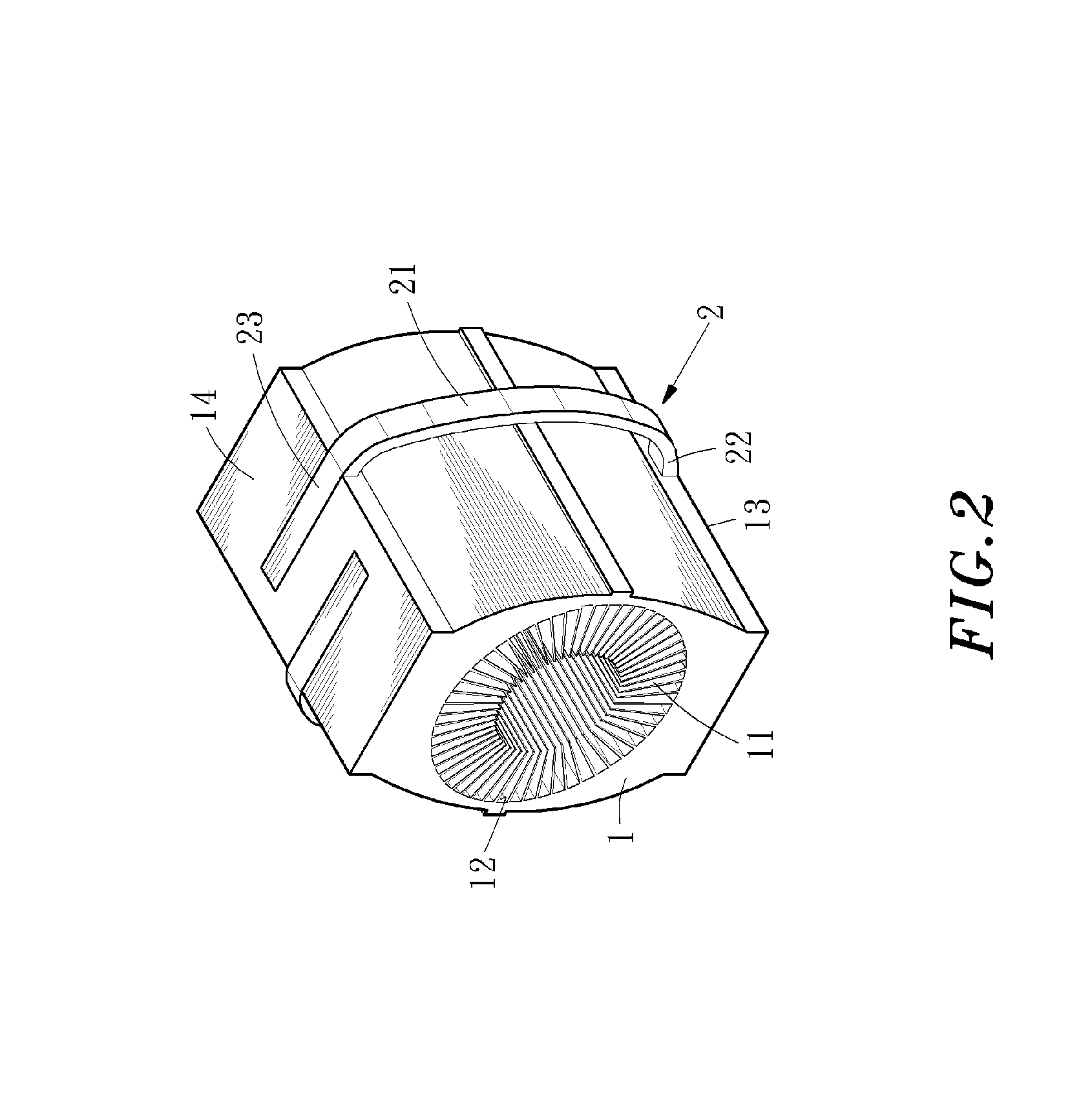Heat sink
a heat sink and heat dissipation technology, applied in the direction of insulated conductors, instruments, and the like, can solve the problems of shortening adversely affecting the stability of electronic components, and overheating of electronic devices, so as to increase the stability and the service life of electronic components, increase the heat dissipation speed, and improve the service life. the effect of cost effectiveness
- Summary
- Abstract
- Description
- Claims
- Application Information
AI Technical Summary
Benefits of technology
Problems solved by technology
Method used
Image
Examples
Embodiment Construction
[0021]Reference will be made in detail to the preferred embodiments of the invention, examples of which are illustrated in the accompanying drawings. Wherever possible, the same reference numbers are used in the drawings and the description to refer to the same or like parts.
[0022]Referring to FIGS. 1, 2 and 3, the heat sink of the present invention comprises a hollow chassis 1 and a heat pipe 2. The hollow chassis 1 comprises a plurality of circularly arranged fins 11, each fin 11 being separated from the other with a gap. The fins 11 extend from an inner sidewall 12 of the hollow chassis 1 towards the center of the hollow chassis 1 so that the gap between the fins 11 gradually decreases from the inner sidewall 12 towards the center. The hollow chassis 1 comprises a contact face 13 at a bottom portion thereof for attaching to an electronic component 4 and a heat dissipating face 14 at the top portion thereof. The contact face 13 and the heat dissipating face 14 comprise an inlaying...
PUM
 Login to View More
Login to View More Abstract
Description
Claims
Application Information
 Login to View More
Login to View More - R&D
- Intellectual Property
- Life Sciences
- Materials
- Tech Scout
- Unparalleled Data Quality
- Higher Quality Content
- 60% Fewer Hallucinations
Browse by: Latest US Patents, China's latest patents, Technical Efficacy Thesaurus, Application Domain, Technology Topic, Popular Technical Reports.
© 2025 PatSnap. All rights reserved.Legal|Privacy policy|Modern Slavery Act Transparency Statement|Sitemap|About US| Contact US: help@patsnap.com



